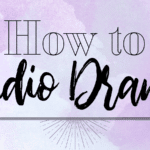How to Network With Other Podcast Hosts

What do you think the greatest predictor of someone’s long-term success at a certain project is?
I’ll give you a hint, it’s not passion. And it’s not talent.
It’s showing up. Consistency. Being resilient and ensuring that you are getting a little better each day. If you want to win at anything in life you can’t do it by yourself in a vacuum. That’s why you don’t see many solo spacewalks.
The same basic idea applies to podcasting as well. If you want to be a better podcaster, you ought to immerse yourself in the podcast ecosystem. If you don’t want to be out there drifting through the vacuum on your own, what’s the next step?
You’ve got to start networking. A longitudinal study from 2009 showed the subjects who were reaching and networking showed far and away more success than those who did excellent work but kept to themselves. The kicker? The networkers were on par much happier too.
That’s great, but, how do you network with other podcast hosts?
Well, like most everything else worth doing in life, it comes down to planning and execution.
Get Your Mind Right
I’m just going to lead off with this and get it out of the way right out of the gate. “Having a positive mindset” is some trite advice that shows up in about any how-to article, often to pad word counts.
But as filler goes, it’s not too bad. In fact, having the right frame of mind when approaching any project can mean the difference between success and failure.
This means its important to find a way to embody that you are a podcaster, you deserve to be in whatever circles you want to be in, and that you’re worthy of not only other people’s time but are worthy of your own time as well.
Don’t forget that, write it down on post-it notes and say it every day if you have to.
Okay, you can get up off the couch, let’s get on with it.
Plan Your Attack
With any sales approach, and this is a sales activity, you need to identify who your potential customers, clients, marks, etc. are. In this case, you need to know what podcast and what related hosts you want to target.
You’ll need to know quite a bit about these shows and be genuine fans of their work. It’s hard to fake that, and life is a lot easier when you aren’t in the position of having to feign interest. Ask any of my ex-girlfriends.
Identify Your Podcasts
Create a master excel sheet with the show’s name, the host’s name, the episode titles that stood out to you. Next, add the dates of the episodes, how often the show posts, and any specific social media channels the host references as their platform of choice.
Then at the end, make a column of notes about the show, why you like it, and what you think it can do for your show or your business. Get deep here. It will serve you later on.
Once you’ve got 10 – 15 podcasts you think would be a good fit, set them aside. Now do the exercise 2 – 3 more times until you have 30 – 45 podcasts that you would consider home run fits.
Remember, sales, and networking is a numbers game. You won’t connect well with everyone for any number of reasons, and they may not connect well with you. That’s life, but it can be hard to remember that when you’re getting rejected by the one host you were overly attached to.
Don’t mentally pick out the house with the white picket fence and fall in love before you’ve even had the first date.
Choose Your Method(s) of Contact – Be Where They Are
Next, for each show you identified, you will need to decide how you are going to contact them. Now that you’ve gotten this far, you’ve got some idea of what the host is all about at this point.
Do they take a lot of show questions? Again, do they mention in the show they are social media junkies who can’t get enough of Instagram?
You’re putting on your private investigator hat. Don’t worry if you don’t get the perfect contact method right on the first try. You can always try different channels later. Right now you want to make sure you’re not bombarding them with a multi-channel approach out of the blue.
You want to let them know you’re interested, not desperate.
In my experience, LinkedIn has been the best social media channel for reaching podcast hosts. It’s not as crowded as some of the others and it is exceedingly easy for the host or host’s people to check you out without having to go hunting for information.
Behind LinkedIn is Twitter for very cursory back and forths, and Instagram. But where I’ve had the most success is good old fashioned email. This goes not only for podcasts but for anything sales related.
A lot of people are still turned off by the rancor and crass nature of social media. So they just aren’t on it. But they are always on e-mail.
If someone tells you they aren’t on email, you’re talking to either a liar or possibly someone to whom the authorities should become acquainted.
Action
You’ve identified your podcasts you want to work with, in whatever context. Then you’ve doubled and tripled that list. Don’t wait any longer. Yes, sales is a numbers game, but to paraphrase Gretsky, if you don’t shoot, you’ll never score.
This means it is time to take action.
Cold Email
“Does anyone still use email in 2020?” I can hear you sniggering from behind your keyboard. Yes… yes they do. While I look up the statistics just think about how many emails you’ve opened today that weren’t responses to questions you asked.
In other words, for at least the subject matter, it was a cold open?
For highly targeted, relevant, and well-formed communication, open rates for cold emails can be as 60%. How’s that for success?
Start With Personality
Think back to building your media one-sheet for getting booked. Your personality had to leap off the page there right? Well, if that’s the interview, the cold-email is the cover letter that goes along with your resume.
Make sure you are bringing your authentic self and authentic energy to the crafting of your message and it will jump through the screen. If you need help finding that voice, John Buchan teaches a course around how his drunken cold email won a lot of business. Not a terrible place to start.
Lead With Value – Don’t SPAM
This should be obvious but think back to the mindset section. You aren’t spamming podcast hosts. If you are doing this properly, you’re creating a targeted communication that adds value to the conversation.
James Altucher always mentions that he comes up with 10 ideas a day. Often, as an exercise, he’ll think of a business owner and think up 10 ideas about their business. Then he’ll give them to that owner. He does this to keep his “idea muscle” sharp, but also to lead with value.
You can do the same with ideas for a show with some abstracts or summaries. It warms up an otherwise cold prospect.
Other Platforms
I’ve outlined how this works for emails, but this could easily be applied to LinkedIn’s InMail just as easily. I personally like taking the communication off someone else’s platform and onto my own.
Conclusion
Lastly, don’t wait. Once you’ve got your prospects identified, start reaching out. You have absolutely no idea what anyone’s timeline is and if, or when, it might correspond with yours.
Jordan Harbinger likes to say that you shouldn’t wait to dig the well until you’re thirsty. By the by, Jordan happens to teach a free course on networking in general that’s worth a glance.
Once you’ve got a few shows in the can and are live on your various promotional channels, start reaching out. As soon as you have the smallest sliver of bandwidth for your show, start reaching out. Then… keep reaching out.
The average sale takes 7 touchpoints to complete. It’s a numbers game and, dare I say it, you need to get your mindset right.
Happy networking.













Comments
Comments are closed.